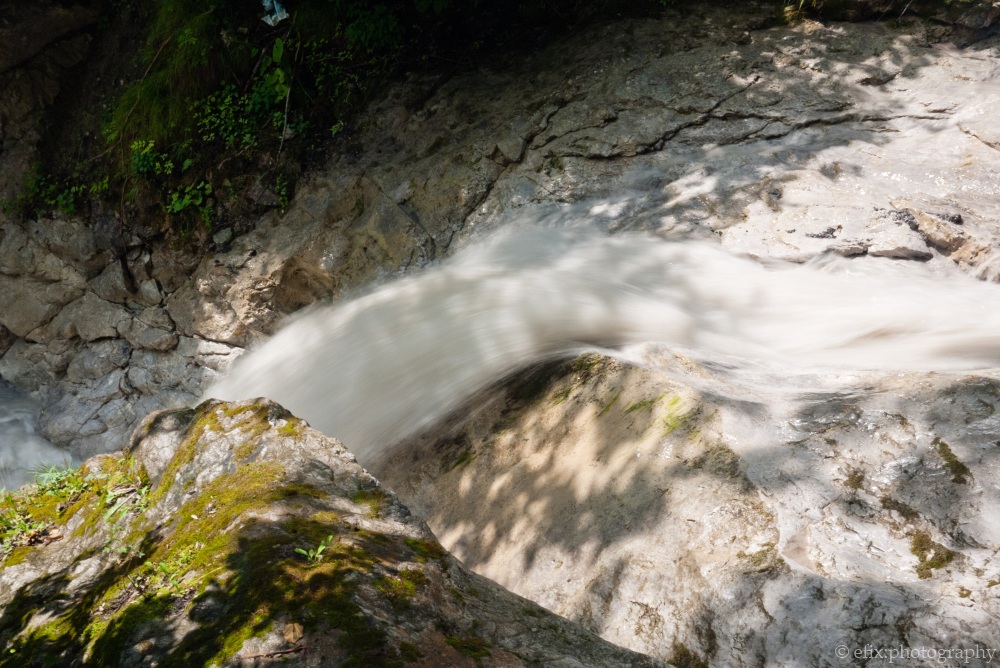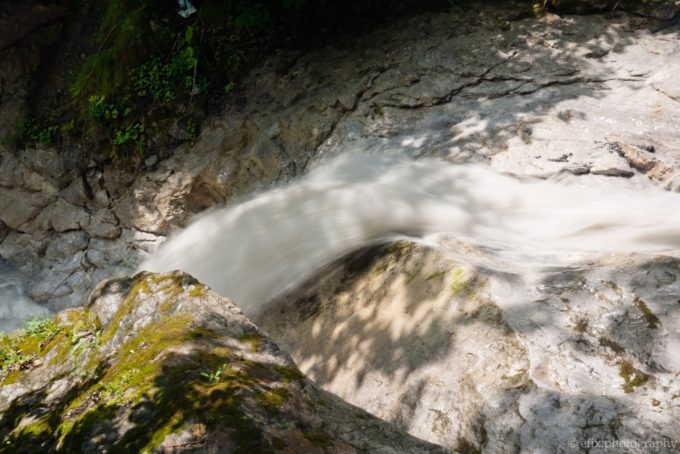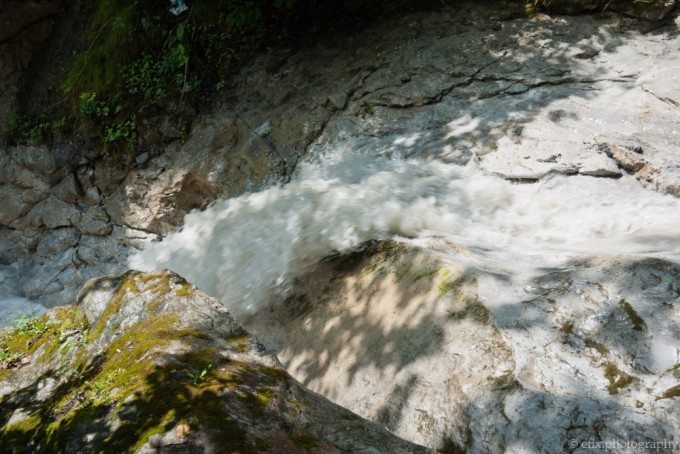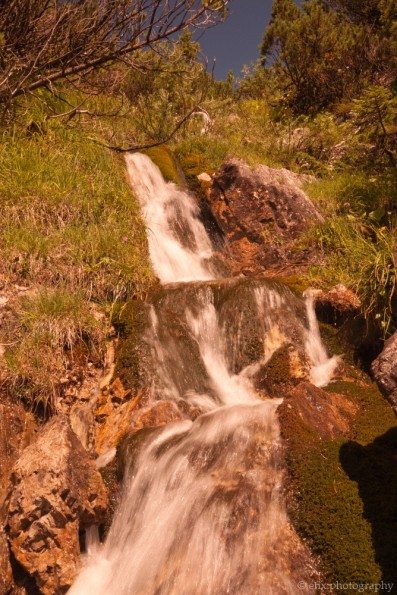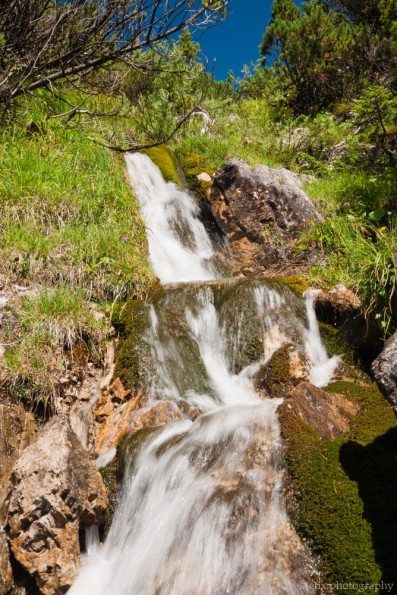The flow of water captured at 1/13 sec thanks to a makedo sunglasses ND-filter
During this year’s summer vacations in the Austrian Alps, I found myself in need of an ND or polarizer filter a couple times. Wandering the mountains of the Alps, I often encountered beautiful mountain streams and small waterfalls that I desired to photograph. However, in the bright sunlight of the day, even with the lens stopped down to f/16, it was impossible to capture the flow of the water. At 1/125th of a second, the water would still look almost frozen. I would need at least 1/20th of a second to have the water appear flowing in the picture. In order to achieve this, I would have needed an ND or a polarizer filter. (A polarizer filter also “swallows” some light, making the resulting image darker.) Not having either with me, nor finding one in the right size in the various camera and electronics stores of Innsbruck, Tyrolia, I had to improvise.
Version of the title image without makedo ND-filter: f/16 @ 1/100 sec
When I remembered that a polarizer filter had the same effect of reducing the amount of light passing through the lens as an ND filter, I had an idea. I always have polarized sunglasses in the car, as they help a lot when driving in bright sunlight, especially after the rain. Could I eventually use them as a make-do ND filter to be able to better capture the flow of the water? Since this was my only option at hand, I decided to try it out. And indeed: my Polaroid sunglasses were able to significantly reduce the amount of light hitting the sensor, so that I was now able to capture the Alpine streams and waterfalls at 1/25th of a second in direct sunlight — as opposed to the 1/125th of a second without the improvised filter.
Strong brownish color tint induced by toned sunglasses
The whole thing had one major drawback, though: my sunglasses have a strong brown tint. While my brain is easily able to automatically correct for the color shift, so that at the outter colors around me appear slightly warmer than normal, the resulting pictures my Panasonic G1 captured all had a strong brown tint. Luckily, however, I found that this tint could be easily removed in post-processing, simply by setting the white balance to just under 3000 K.
Version of the above image with corrected white balance
And the moral of this story? If you ever find yourself in need of an ND filter but have none at hand, improvise with your sunglasses! (Provided they are dark enough!)
Please Support The Phoblographer
We love to bring you guys the latest and greatest news and gear related stuff. However, we can’t keep doing that unless we have your continued support. If you would like to purchase any of the items mentioned, please do so by clicking our links first and then purchasing the items as we then get a small portion of the sale to help run the website.


